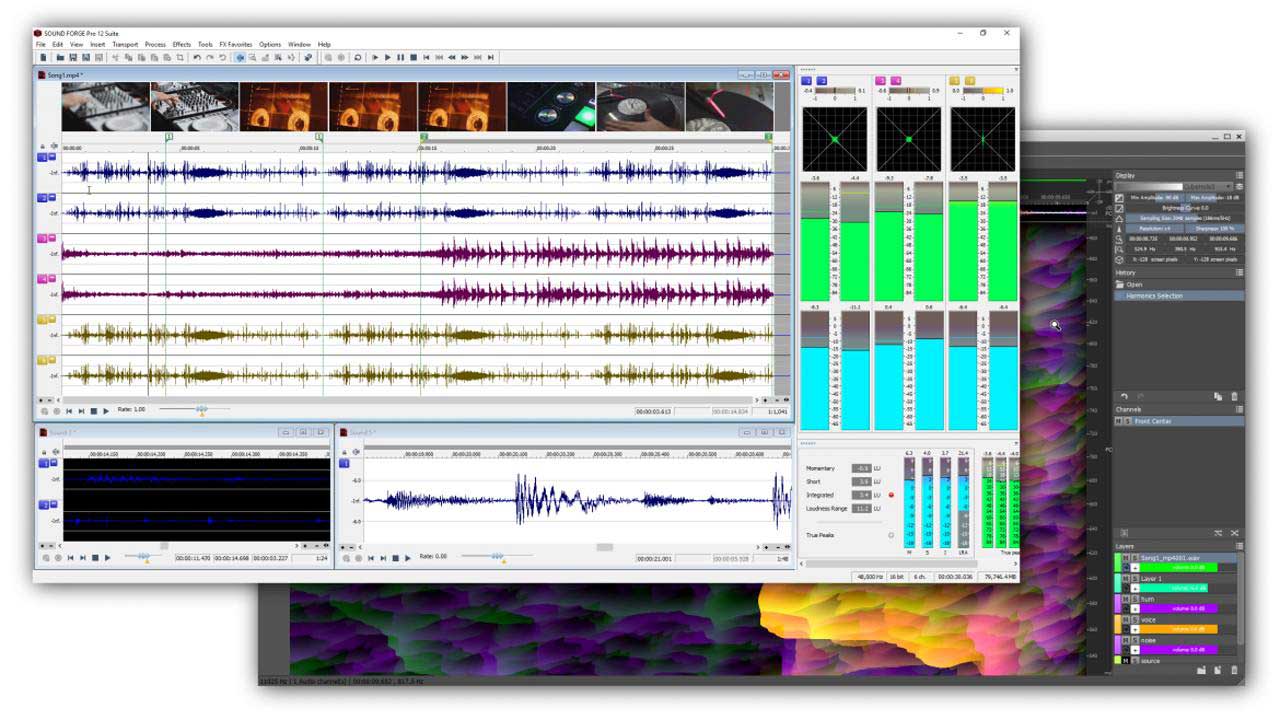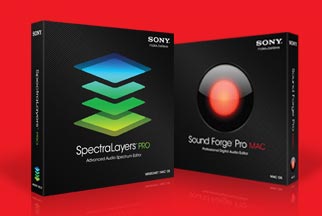Has been the home for an innovative set of audio and video editing and mixing tools originally developed by Sonic Foundry. These include Vegas Pro, ACID and Sound Forge, which have traditionally been tightly integrated with the Windows operating system. On the other side of the fence, Mac OS has enjoyed a wide range of creative tools, especially for audio production and post. Until recently BIAS Peak had been go-to, two-track audio editor and mastering tool for Mac-based audio engineers; but, the company has apparently withdrawn from the market, leaving an opening for some new blood to step in. Enter Sony’s Sound Forge Pro for the Mac.

Sound Forge has been the tool of choice for Windows-based audio production and now Sony has made a strong entry into the Mac creative universe. Is a comprehensive tool for audio analysis, recording, editing, processing and mastering. Although it is thought of as a two-track editor, it can deal with multi-channel files with as many as 32 embedded channels, sample rates up to 192kHz and bit depths up to 64-bit float. Since most users are going to be limited by their I/O hardware, they will likely work with 24-bit, 48kHz stereo files. To be clear, it’s designed to edit and master single files and is not a multi-track digital audio workstation application for mixing. Sound Forge can be used as a recording application if you have an input device on your system, such as the Avid/Digidesign Mbox2 Mini that I use.
Sound Forge sports a clean user interface that will appeal to the professional. It might look a tad Spartan to some, since it bucks the current trend of dark, dimensional interfaces. In other words, it’s devoid of unnecessary “chrome”. The operation is very easy to learn, thanks to a tabbed window layout, easy-to-understand controls and menus and a good user guide.
Sound Forge Pro Mac comes with a set of Sony plug-ins, as well as the iZotope mastering suite filters. In addition, Sound Forge will support many third party VST and Mac Audio Units plug-ins. I have a set of Focusrite Scarlett filters, the Waves OneKnob series and Waves Vocalrider plug-ins installed on my Mac Pro, which all show up and work properly within Sound Forge. The iZotope set is superb, so for pristine audio quality, Sound Forge is as good as it gets. I applied a Declicker noise reduction filter to an old recording from a vinyl LP. This filter did one of the best jobs I’ve heard to remove and/or reduce the record pops and clicks without adding negative artifacts to the file. Audio filters can be applied as a processing step – meaning the filter is set and previewed and then applied to alter the file.
Sound Forge also includes a real-time plug-in chain. Stack up a series of filters in the chain window and tweak the adjustments. The order can be changed and saved as a preset for later use. Simply listen to the file in real-time with the filter chain applied. If you like the result, apply these settings in a “save as” function and the file will be rendered in a faster-than-real-time “bounce”.
Some filters, like Timestretch can only be applied as an effects process and won’t function as part of a real-time plug-in chain. As an editing tool, Sound Forge lets the editor get down to the sample level. You can redraw waveforms with a pen tool in addition to the usual keyframed changes to parameters like the volume envelope. Unlike other audio editors, where volume and pan are part of the basic track window, Sound Forge gives you several ways to adjust volume. One way is to add a specific volume filter where you apply any audio keyframe adjustments.
Another way is to create an event (a section of timeline) and drag the volume level up or down. The audio editing tools are quite simplified. Selected a range you want to remove, hit the delete key and you’ve made the edit.
There’s even an edit preview function so you can hear what the edit will sound like before committing. To add space, insert silence. This methodology is a bit foreign to video editors used to the way NLEs handle audio tracks. Once you make an edit in Sound Forge this way, there’s no segment in the track or cut marks on the clip indicating where the edit had been made. If you split the track into events, however, then track segment appear more familiar and you have the ability to trim, edit, slip clip segments and add crossfades at overlaps.
You can also mark up the file into regions, which may be separately exported. In the example I cited earlier of the old vinyl LP, I recorded each complete side as a single audio file. After audio clean-up in Sound Forge, the file would be broken into regions for each song on that LP side. These would finally be exported as separate regions to result in a new digital file for each individual song. There are some missing elements in this 1.0 version. For example, Sound Forge doesn’t recognize most video files.
I was able to open the audio track from an MP4 file, but not a QuickTime movie. There is no JKL transport control and no scrubbing. You can loop playback, but you cannot shuttle through the track with the mouse and hear either an analog or digital-style scrubbing sound. It’s real-time playback or nothing.
The application is a good file conversion utility. If you need to generate high-quality MP3 files for clients, Sound Forge is definitely useful.
Unfortunately there’s no batch conversion function. Another curious omission for an audio-centric tool is the lack of CD track layout and burning tools.
Sony Sound Forge For Mac
I realize that we work in a file-based world, but when Adobe dropped the same tools from Audition, they ended up having to add them back in Creative Suite 6. Obviously users still feel that there’s a need for this.
Audio engineers and mixers can see the obvious benefit to another great audio tool for the Mac – especially with the demise of BIAS Peak and the end-of-life of Apple’s Soundtrack Pro. For video editors, it might be a bit more questionable.
I find Sound Forge Pro to be a solid tool when you need to focus on audio-only tasks, like dialogue clean-up, noise reduction and voice-over recordings. Clients often request radio versions of the TV commercials I edit. Here again, working in a tool that’s optimized for the task is the right way to go.
The lack of video support is a wrinkle, but it’s easy enough to export a WAV or AIF file from most NLEs. Then open that file in Sound Forge and work your magic. Sony’s Sound Forge Pro Mac 1.0 is a solid first step to bring this application to Mac users. I haven’t had any hiccups with it, in spite of the fact that it’s a 1.0 product. If Sony expands on some of the missing items, this will become the go-to professional audio tool for Mac users, just as it has been for Windows.

Finally Sound Forge For Mac Pro
©2013 Oliver Peters.
Finally Sound Forge For Mac Torrent
'People who work on audio editing platforms recognize the need for a fresh option in the marketplace, one that's built for OS X as opposed to something that's simply been ported over. In addition, it's no secret that cross-platform professionals have been demanding Sound Forge for the Mac for years,' said Dave Chaimson, vice president of global marketing for Sony Creative Software. 'Our response is Sound Forge Pro Mac, a truly contemporary OS X design. Producers will appreciate its simple elegance, uncluttered look and amazing flexibility.
The included suite of mastering and repair plug-ins makes this 1.0 edition a value-packed editing powerhouse right out of the box. Sound Forge Pro Mac is our second major OS X application release this year, and we're pleased to now be very actively engaged in application development for the Mac platform.'